Imagine stepping into your backyard and finding a stunning gazebo that not only elevates your outdoor space but also becomes a cherished oasis for relaxation and gathering. Whether you’re a beginner looking to dip your toes into outdoor design or a seasoned homeowner eager to refresh your backyard retreat, our guide, “14 Gazebo Design Ideas for Your Next Project,” offers something for everyone. This carefully curated list will inspire and empower you to create a breathtaking extension of your home, no matter your experience level.
In exploring these design ideas, you’ll discover practical insights that make transforming your outdoor area both achievable and rewarding. From maximizing space to enhancing functionality, each idea is crafted to help you unlock the full potential of your backyard, turning it into a beautiful, inviting sanctuary. Let’s embark on this exciting journey together, where you’ll gain the confidence to bring your dream gazebo to life, creating memories and moments that will be cherished for years to come.
Incorporate Natural Wood Accents
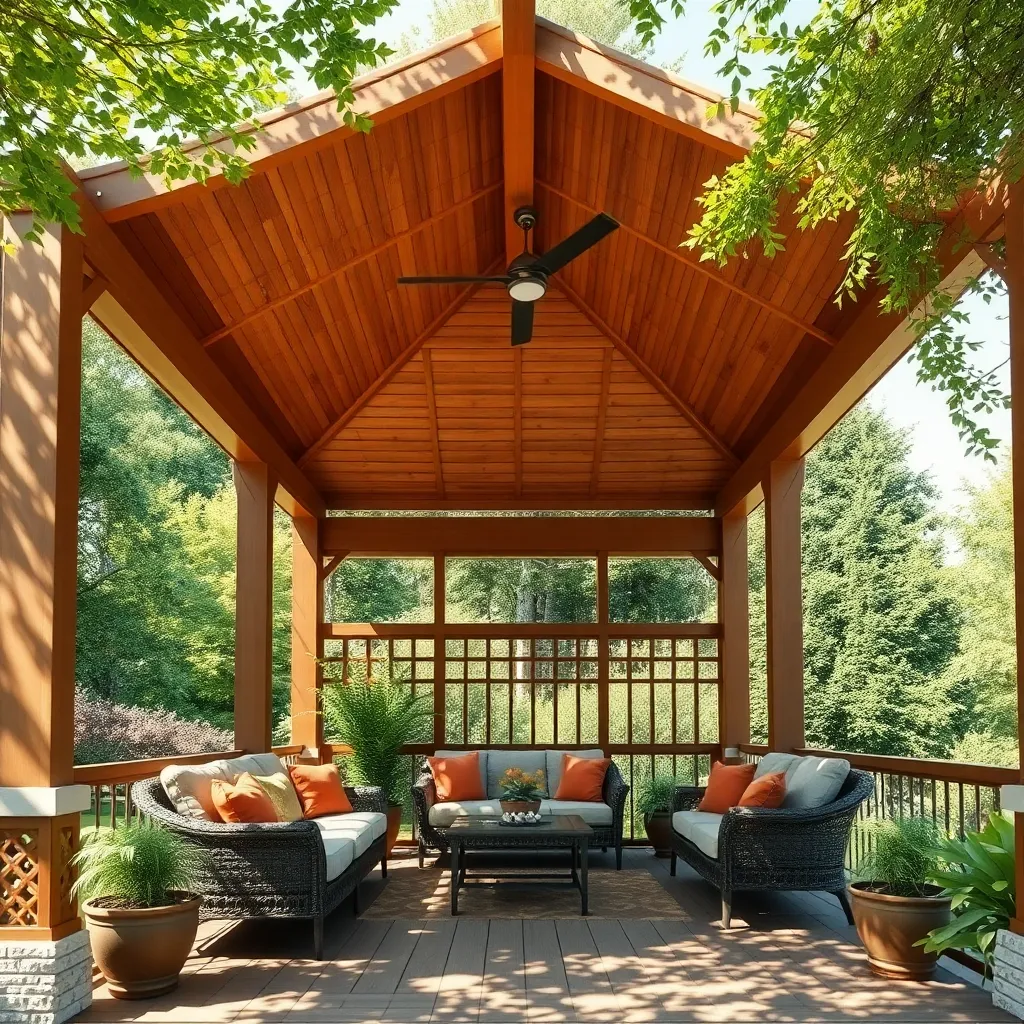
To seamlessly blend your gazebo with the natural environment, consider incorporating natural wood accents. Opt for durable woods like cedar, redwood, or pressure-treated pine, which are resistant to insects and decay. Beginners can start by adding wooden railings or benches, while those with more experience might experiment with intricate latticework or custom wooden screens. Using a clear sealant will protect the wood from the elements while preserving its natural beauty.
Enhancing the visual appeal with natural wood involves thoughtful design choices. Try mixing different textures, such as smooth planed surfaces combined with rough-hewn beams, to add depth and interest. For advanced DIY enthusiasts, integrating carved wooden details can elevate the structure’s aesthetic. Always ensure that any wood used is properly treated for outdoor use to enhance longevity and reduce maintenance efforts. By following these tips, you’ll create a warm, inviting space that feels like an extension of the natural surroundings.
Choose Weather-Resistant Materials
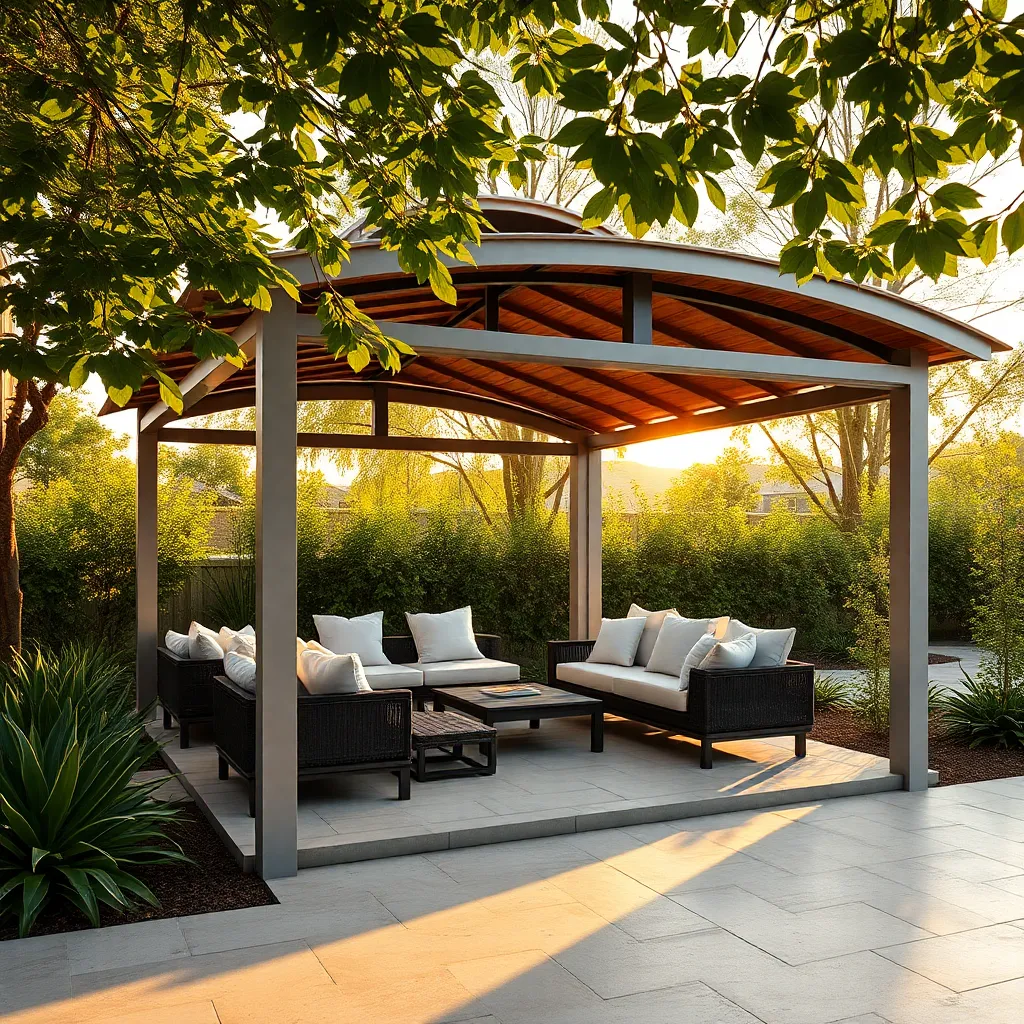
For a gazebo that withstands the elements, choosing the right materials is crucial. Opt for pressure-treated wood as it is resistant to rot and insects, ensuring your structure remains sturdy over time. If you prefer a more modern look, consider powder-coated aluminum or galvanized steel; both offer excellent durability and low maintenance, making them ideal for withstanding harsh weather conditions.
Beyond the framing, selecting a robust roofing material is equally important. Use polycarbonate panels for a lightweight yet strong option, which provides UV protection and withstands heavy rain. For an aesthetic touch with durability, consider metal roofing—it can last for decades and handle extreme weather with ease. Always ensure that your chosen materials are rated for outdoor use to maximize the lifespan of your gazebo.
Add Retractable Privacy Screens
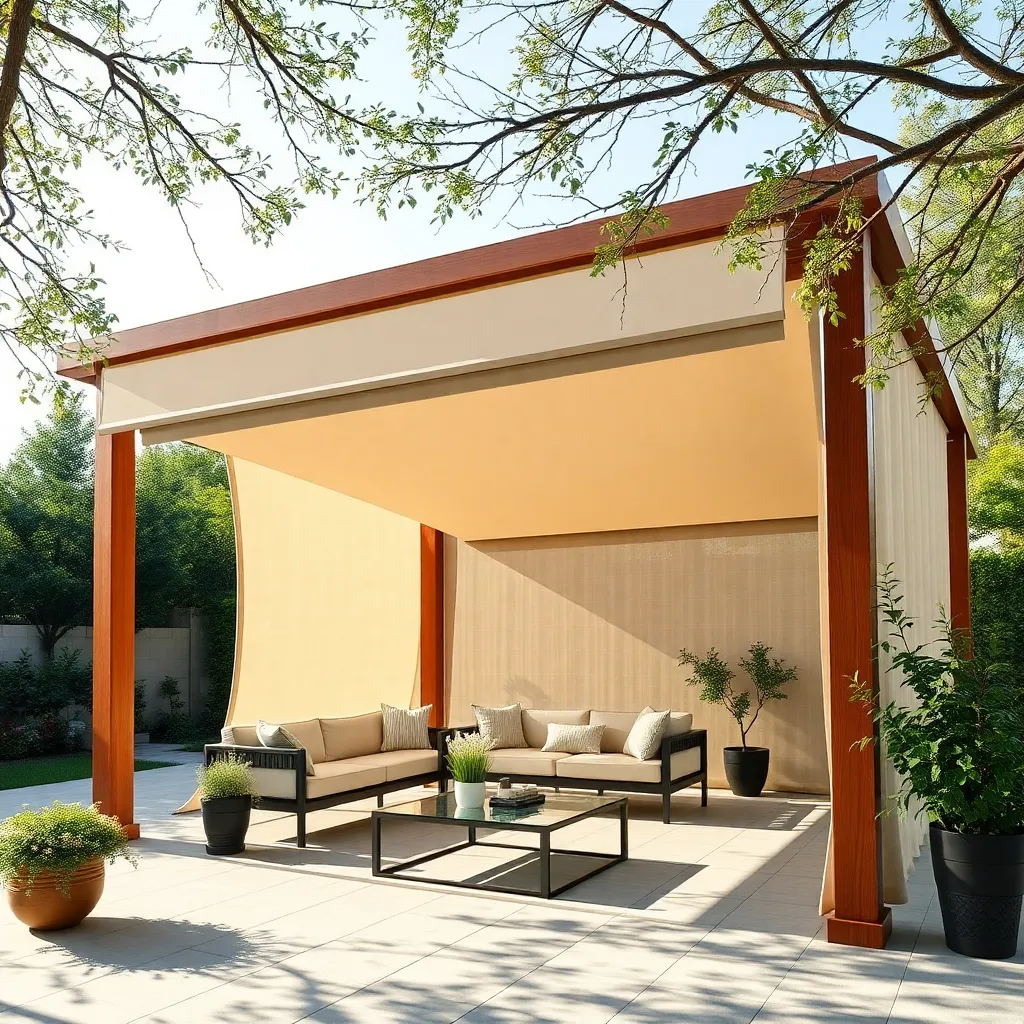
Enhancing your gazebo with retractable privacy screens can transform it into a cozy and secluded retreat. Opt for materials such as durable polyester or vinyl-coated polyester mesh, which offer excellent weather resistance while maintaining privacy. For an easy-to-manage installation, consider screens with a simple pulley or crank system. This allows you to effortlessly adjust the screens according to your needs, whether it’s to block the wind, sun, or prying eyes.
For a more sophisticated touch, advanced DIYers might consider integrating motorized screens that can be controlled via a remote or smartphone app. Ensure the frame is solid and securely attached to the gazebo structure; metal or treated wood frames are ideal for long-lasting support. Measure carefully to ensure a snug fit, typically leaving a 1-2 inch clearance from the ground to prevent wear and tear. With the right setup, retractable privacy screens add both functionality and style to your outdoor haven.
Enhance Ambiance with String Lights
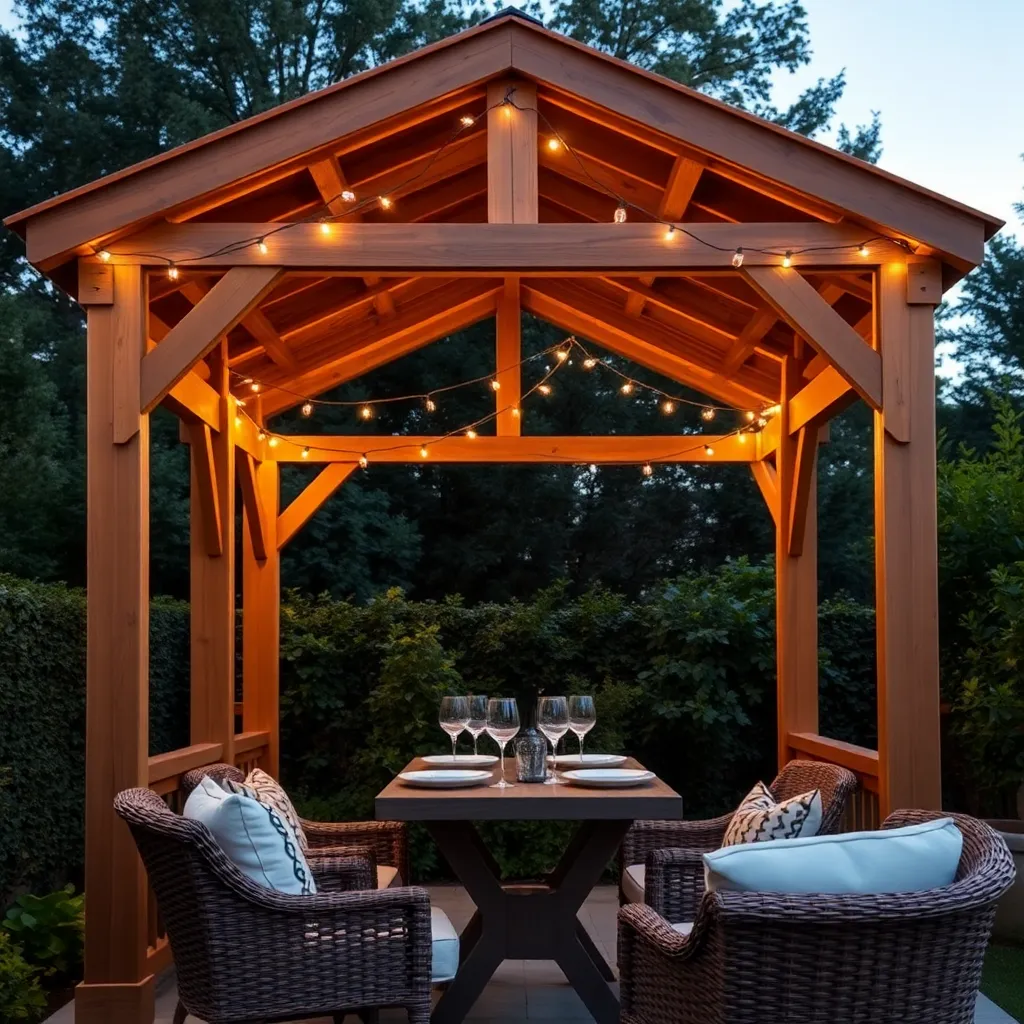
Transform your gazebo into a magical retreat by enhancing its ambiance with string lights. Start with choosing durable, weather-resistant options made for outdoor use, such as LED or solar-powered lights to reduce energy consumption and maintenance. Beginners can easily wrap string lights around the gazebo’s rafters or hang them along the edges for a simple yet enchanting look. For a more advanced design, consider crisscrossing the lights across the ceiling or draping them in a cascading fashion to create a starry-night effect.
Installation is key to both safety and aesthetics, so ensure you use strong hooks or clips to secure the lights, preventing them from sagging or falling. Opt for bulbs with a warm white glow to create a cozy atmosphere that complements any outdoor gathering, from casual family dinners to elegant soirées. For a touch of creativity, incorporate string lights with different shapes or colors to match the season or occasion. Whatever your design choice, the right lighting can transform your gazebo into a welcoming haven that you’ll love to enjoy year-round.
Opt for a Multi-Tiered Roof
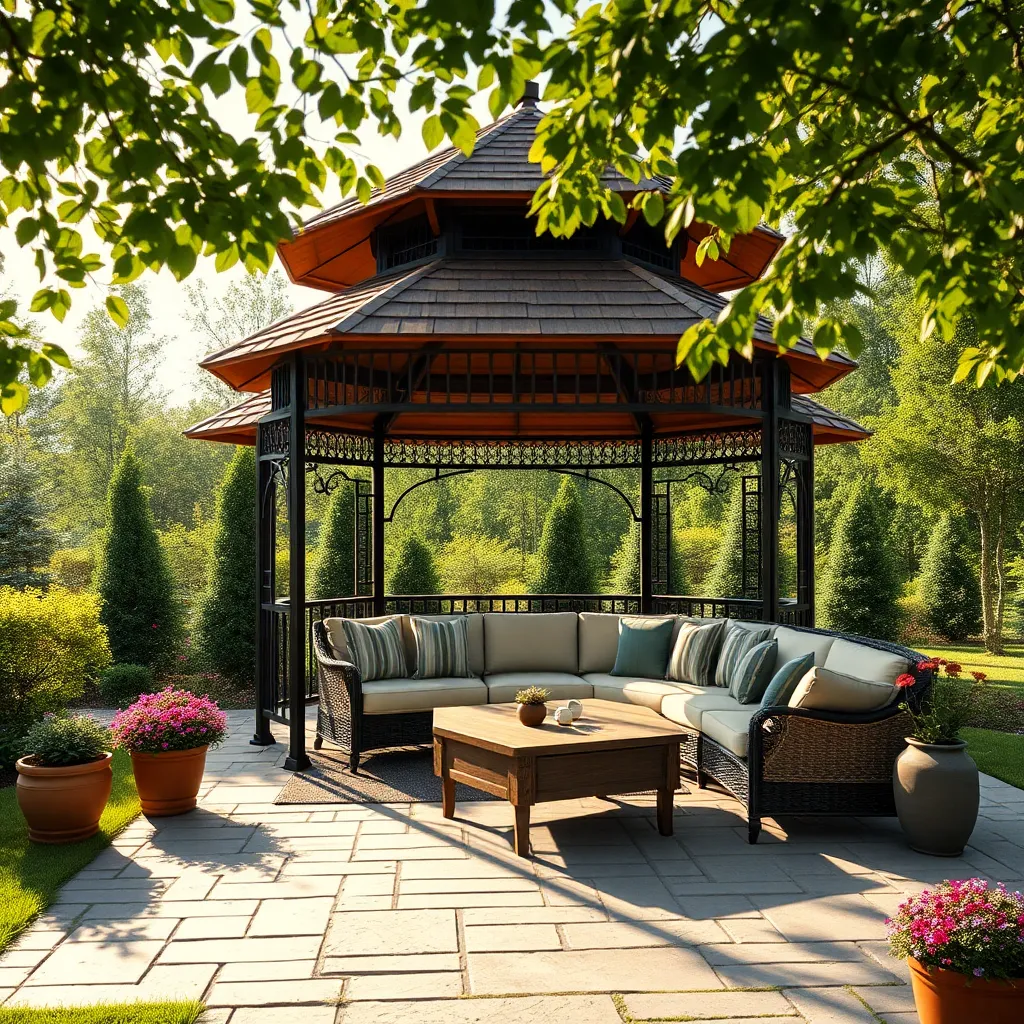
Incorporating a multi-tiered roof into your gazebo design can not only add visual interest but also improve its functionality. Opt for materials like cedar, pine, or composite shingles, as they offer durability and weather resistance. For beginners, a basic two-tiered structure can be a great starting point, while experienced builders might explore three or more layers to create a more intricate look. Ensure each tier is properly sealed to prevent leaks, enhancing the longevity of your shelter.
When designing a multi-tiered roof, consider the angle and height of each tier for optimal rainwater runoff. Keep the top tier slightly smaller to achieve a cascading effect that is not only aesthetically pleasing but also practical. Advanced builders can integrate skylights or vents between tiers to improve airflow and natural lighting. Remember, precise measurements and quality construction are key to achieving a stunning result that will serve as a focal point in your outdoor space.
Include Built-In Seating Options
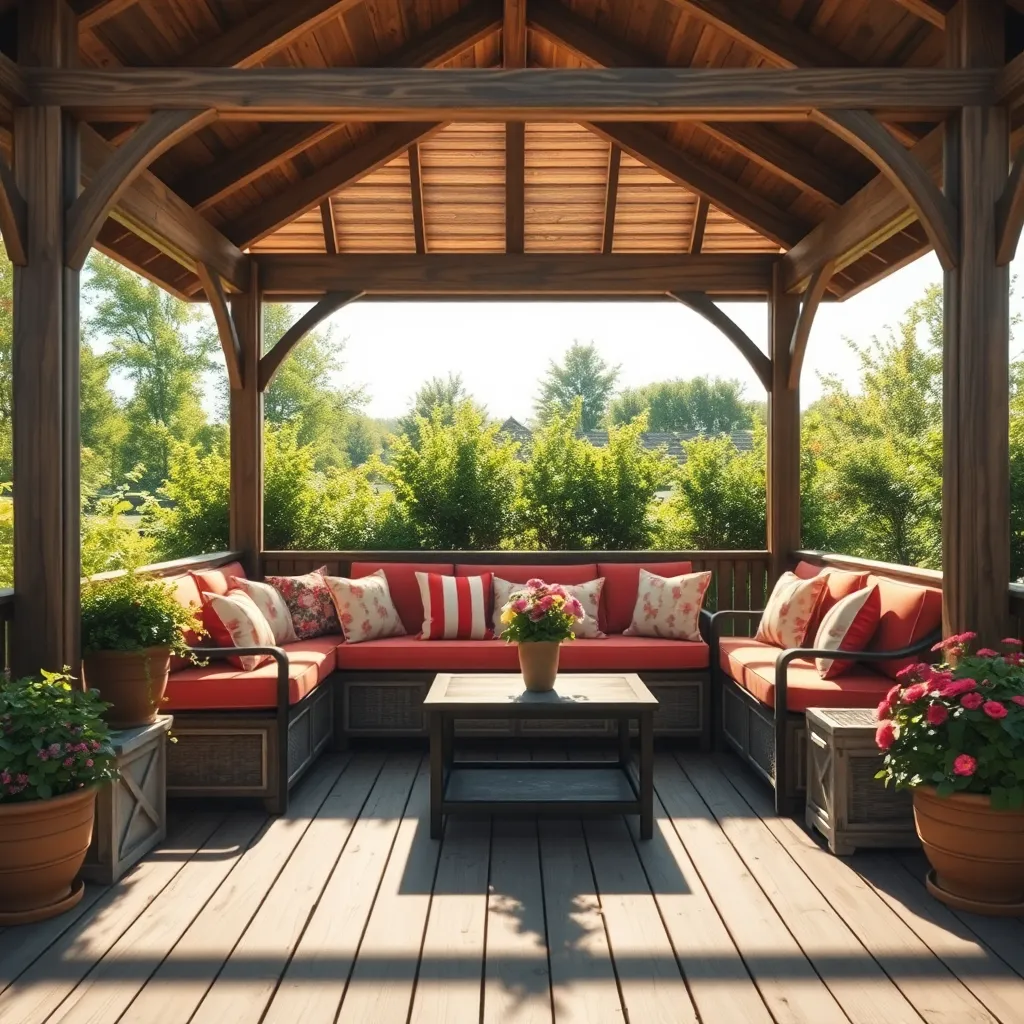
Adding built-in seating to your gazebo not only enhances its functionality but also maximizes space. Consider using durable materials like cedar or teak, which are weather-resistant and blend seamlessly with natural surroundings. Incorporate storage beneath the seats to keep cushions and outdoor essentials tucked away neatly. Beginners can start with simple bench designs, while more experienced DIYers might explore curved or L-shaped seating to suit their space.
Think about comfort and style when choosing cushions and upholstery. Opt for outdoor fabrics that are UV-resistant and quick-drying to withstand various weather conditions. For a polished look, coordinate the seat fabric with other elements of your outdoor space, such as throw pillows or a nearby garden. Advanced builders can integrate features like a built-in table for drinks or snacks, providing a versatile and inviting area for entertaining guests.
Install Solar-Powered Lighting Fixtures
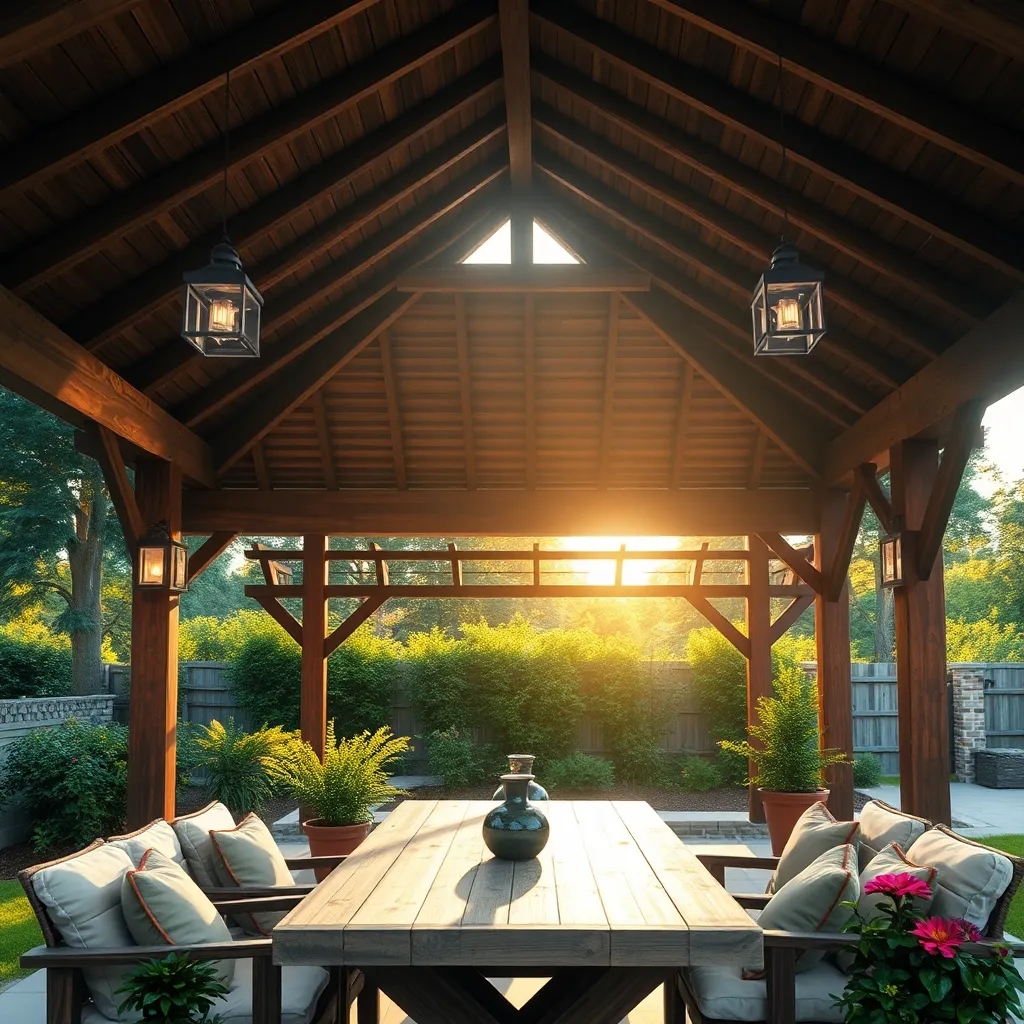
Enhancing your gazebo with solar-powered lighting fixtures can create a warm and inviting atmosphere while being environmentally friendly. Choose fixtures designed for outdoor use that are weather-resistant and durable, such as those made from stainless steel or high-quality plastic. Position the solar panels in a location that receives ample sunlight throughout the day to ensure optimal performance. For a balanced look, consider using a mix of hanging lanterns and ground stakes to illuminate different areas of the gazebo.
For beginners, installing solar-powered string lights around the perimeter can be an easy and effective way to add charm. Simply attach the lights to the roof beams or drape them along the railings. More advanced DIYers might explore integrating solar-powered LED downlights into the gazebo’s roof structure for a sleek, modern look. Ensure all wiring is safely secured and hidden to maintain a clean aesthetic. This approach not only enhances nighttime usability but also adds a layer of security by lighting up the surrounding area.
Design with Open-Air Ventilation
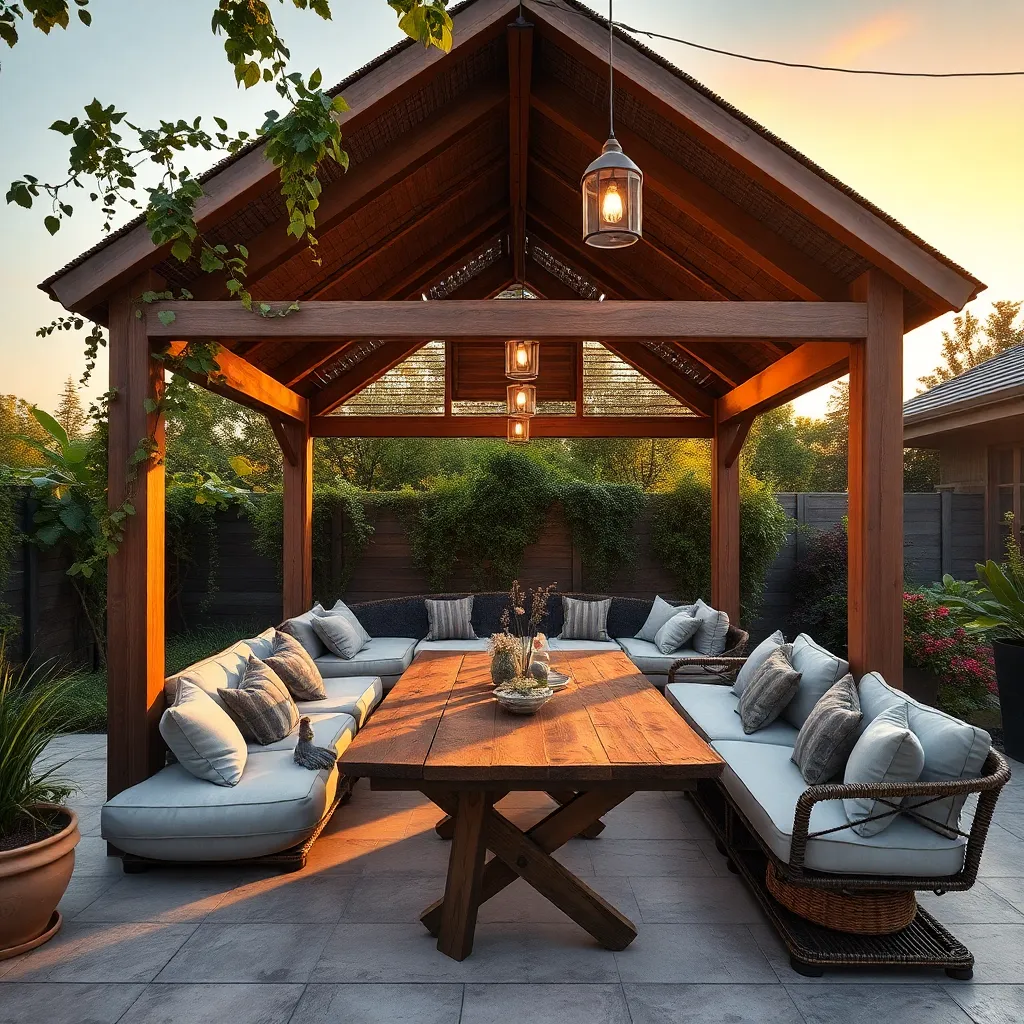
Incorporating open-air ventilation into your gazebo design ensures a cool and comfortable space, especially during warm months. For a basic setup, consider a lattice design, which allows air to flow freely while providing some shade and privacy. Choose materials like cedar or redwood that are durable and weather-resistant, and position your gazebo to take advantage of prevailing winds. This setup not only enhances comfort but also reduces the need for additional cooling measures.
For those looking to enhance their design further, consider integrating adjustable louvered panels that can be opened or closed depending on the weather. These panels add flexibility, allowing you to control airflow and sunlight exposure as needed. Advanced builders can install a cupola with vents on the roof, which aids in natural air circulation by allowing hot air to escape. By using these features wisely, you create a gazebo that is both functional and inviting, making it the perfect outdoor retreat.
Integrate Built-In Planter Boxes
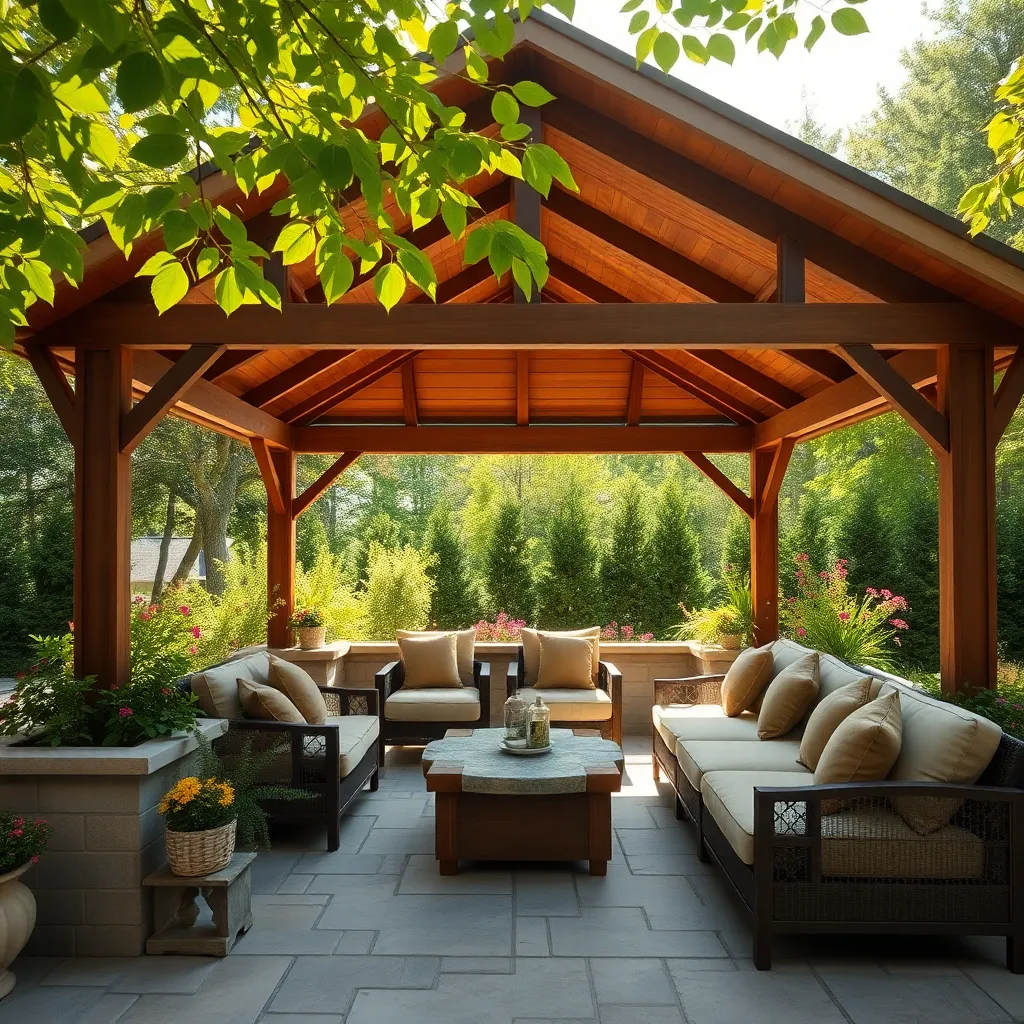
Enhance your gazebo by integrating built-in planter boxes, which not only add beauty but also a touch of nature. Choose durable materials like cedar or pressure-treated wood, which resist rot and withstand the elements. When designing your planters, ensure they are at least 12 inches deep to accommodate a variety of plants, from vibrant flowers to lush herbs. Beginners can start with simple rectangular designs, while experienced DIYers might experiment with custom shapes that fit snugly into gazebo corners or line the edges.
For an advanced touch, incorporate a self-watering system to reduce maintenance and keep plants thriving. Consider adding a layer of landscape fabric inside the boxes to improve drainage and prevent soil loss. Elevate your design by coordinating the planter’s finish with your gazebo’s color scheme for a seamless look. Remember to position your planters to get optimal sunlight, especially if you’re growing sun-loving plants. These enhancements invite nature into your space, creating a serene, green oasis ideal for relaxation and gatherings.
Select a Complementary Color Palette
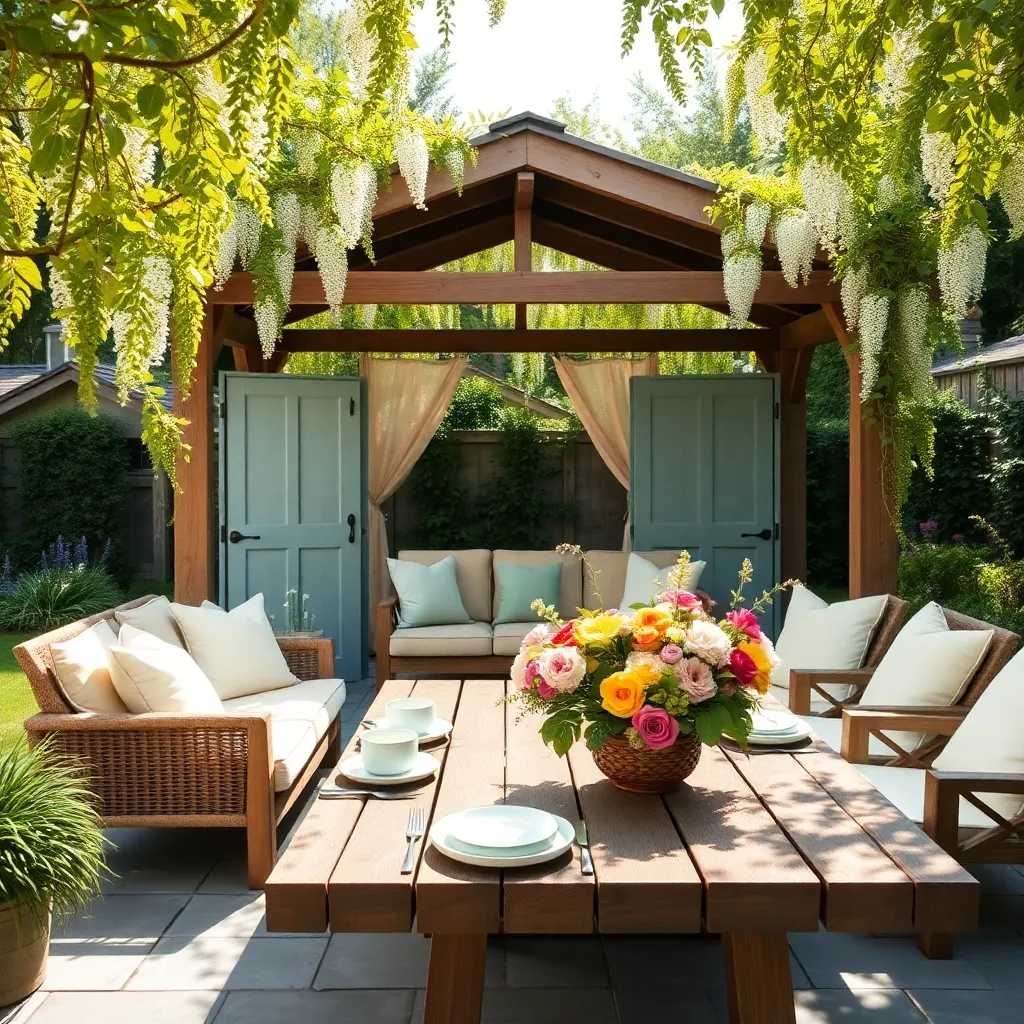
When selecting a color palette for your gazebo, consider hues that complement your existing outdoor environment. Start by identifying the dominant colors in your garden or yard, such as the shades of your plants, patio tiles, or house exterior. Choose a primary color for the gazebo that harmonizes with these existing elements, ensuring a cohesive look. For beginners, using neutral tones like soft grays or beiges can create a versatile backdrop that matches a wide range of plants and furniture.
For a more advanced touch, incorporate accent colors through cushions, curtains, or even painted trim that ties into your primary choice. This added layer can bring depth and interest to the structure. Consider using durable, weather-resistant materials like outdoor paints or stains to maintain the vibrancy of the colors over time. For wood gazebos, a semi-transparent stain can enhance the natural grain while providing protection from the elements. By thoughtfully selecting your color palette, you’ll create a gazebo that not only fits seamlessly into your outdoor space but also elevates it.
Create a Cozy Fire Pit Area
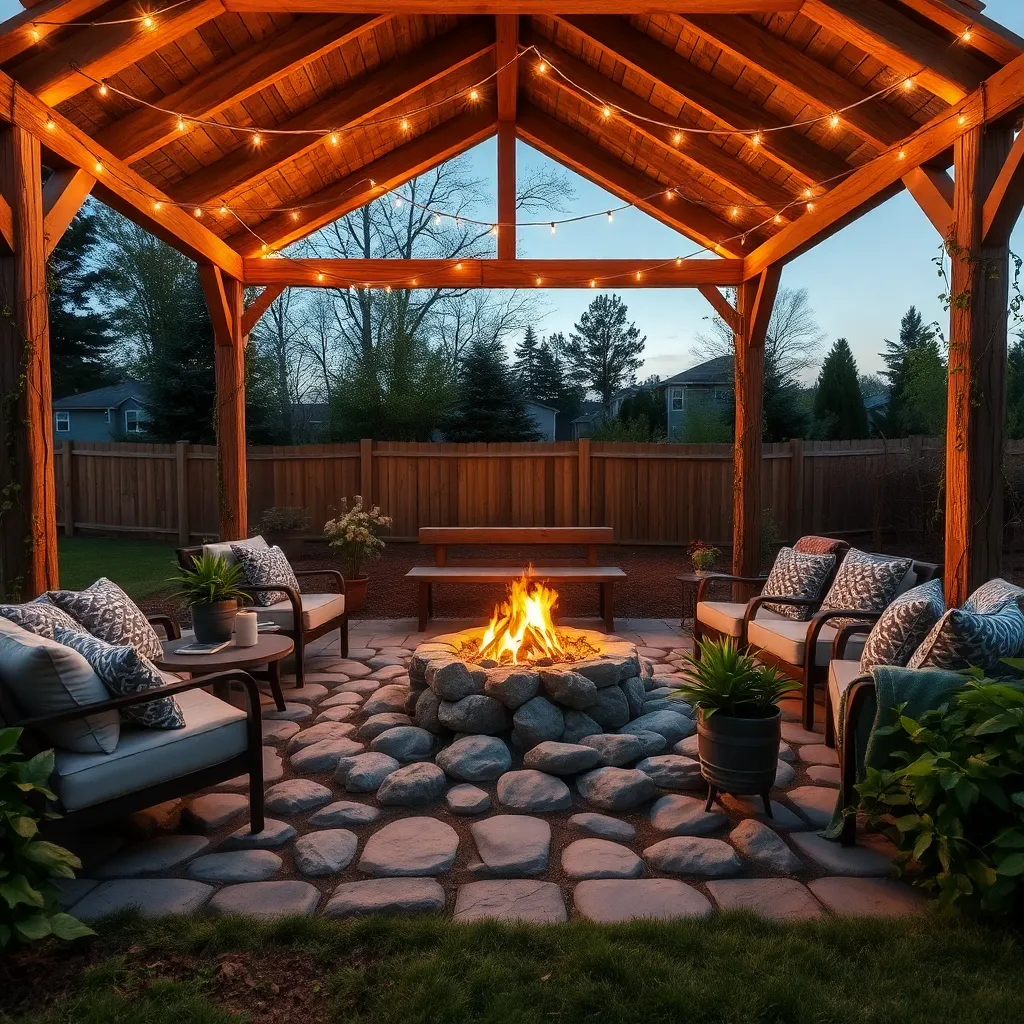
Transforming your gazebo area into a cozy fire pit retreat can enhance your outdoor living experience. Start by selecting a location that’s at least 10 feet away from any structures or overhanging branches to ensure safety. Use durable materials like concrete pavers, natural stone, or heat-resistant bricks to construct a fire pit that suits your style. Consider a circular or square design, depending on the space and aesthetic preferences, and ensure it’s about 3 to 4 feet in diameter for a comfortable seating arrangement. Add a layer of gravel or sand beneath the pit to aid drainage and prevent weed growth.
For seating, opt for weather-resistant options such as teak or metal chairs, which offer durability and style. Arrange them around the fire pit, maintaining a distance of at least 3 feet from the flames for safety. Introduce cozy elements like outdoor cushions and throws made from weather-resistant fabrics to enhance comfort. For added ambiance, string lights or solar-powered lanterns can be hung from the gazebo or nearby trees, creating a warm, inviting glow during evening gatherings. An advanced tip is to integrate built-in storage benches around the perimeter of the gazebo for a seamless look and practical storage solution for firewood and accessories.
Utilize Space for Outdoor Dining

Transform your gazebo into a charming outdoor dining area by incorporating versatile design elements. Choose sturdy, weather-resistant materials like teak or powder-coated aluminum for your dining set to withstand outdoor conditions. For a cozy atmosphere, add string lights or a chandelier-style light fixture suitable for outdoor use, which can be wired through the gazebo’s ceiling.
Consider adding a built-in bench along one side of the gazebo to maximize seating without crowding the space with chairs. This can be another opportunity to use durable materials such as treated wood or composite decking. To enhance comfort, select cushions made from outdoor-grade fabric that resists moisture and fading. For a more advanced touch, install retractable screens or curtains to provide shade and privacy, allowing you to enjoy meals regardless of the weather.
Add Decorative Lattice Panels
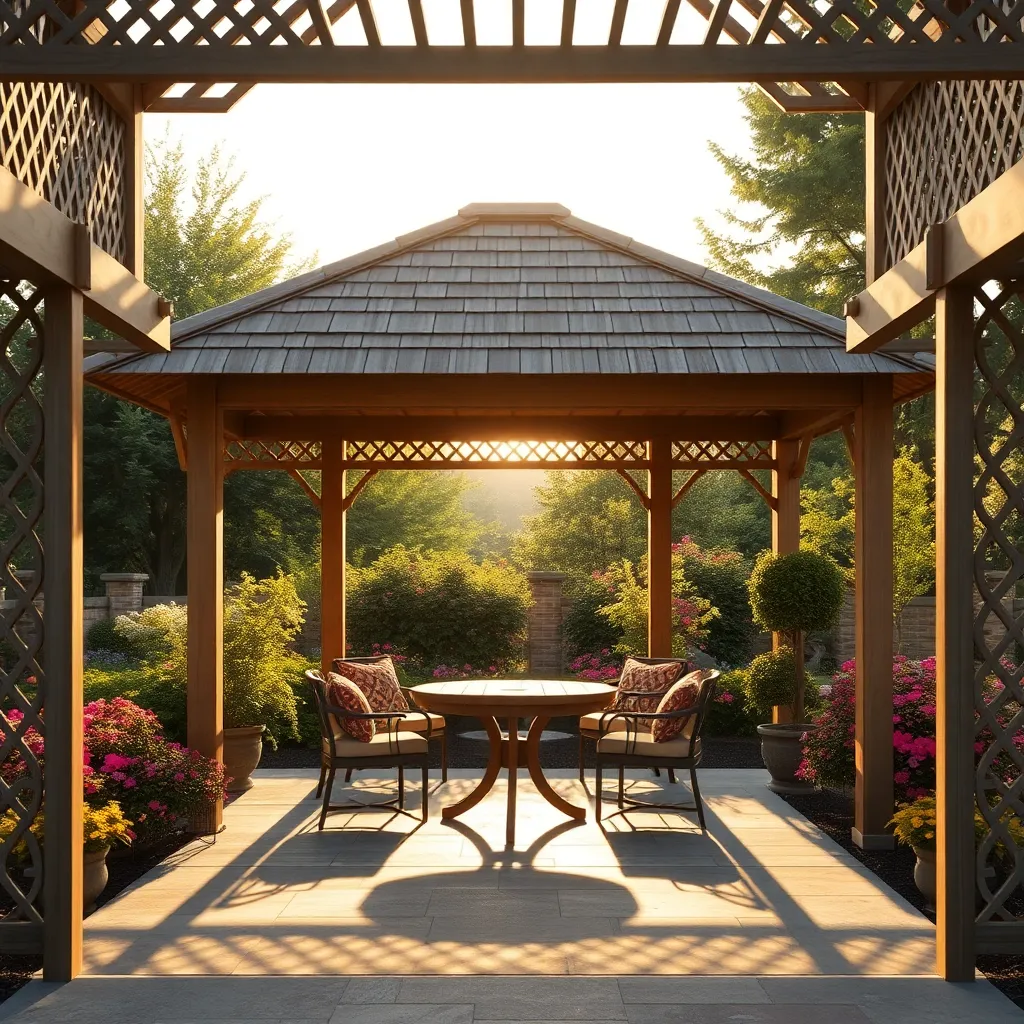
Incorporating decorative lattice panels into your gazebo design can add elegance and functionality. These panels provide privacy while allowing air and light to flow through, making your outdoor space more inviting. Select materials like weather-resistant wood or vinyl to ensure durability. Beginners might start with premade panels, which are easy to find at home improvement stores and simple to install with basic tools. For those ready to tackle a more advanced project, consider custom designs that match your home’s aesthetic.
A lattice panel can also serve as a creative backdrop for climbing plants, adding a natural touch to your shelter. Consider using panels with a grid spacing of 1 to 2 inches to support a variety of climbers like clematis or ivy. When installing, ensure that the panels are securely anchored to withstand weather conditions. Advanced DIYers might explore incorporating integrated lighting into the lattice for an ambient evening atmosphere. This combination of style and practicality will transform your gazebo into a cozy retreat perfect for relaxation and entertaining alike.
Incorporate a Water Feature Nearby
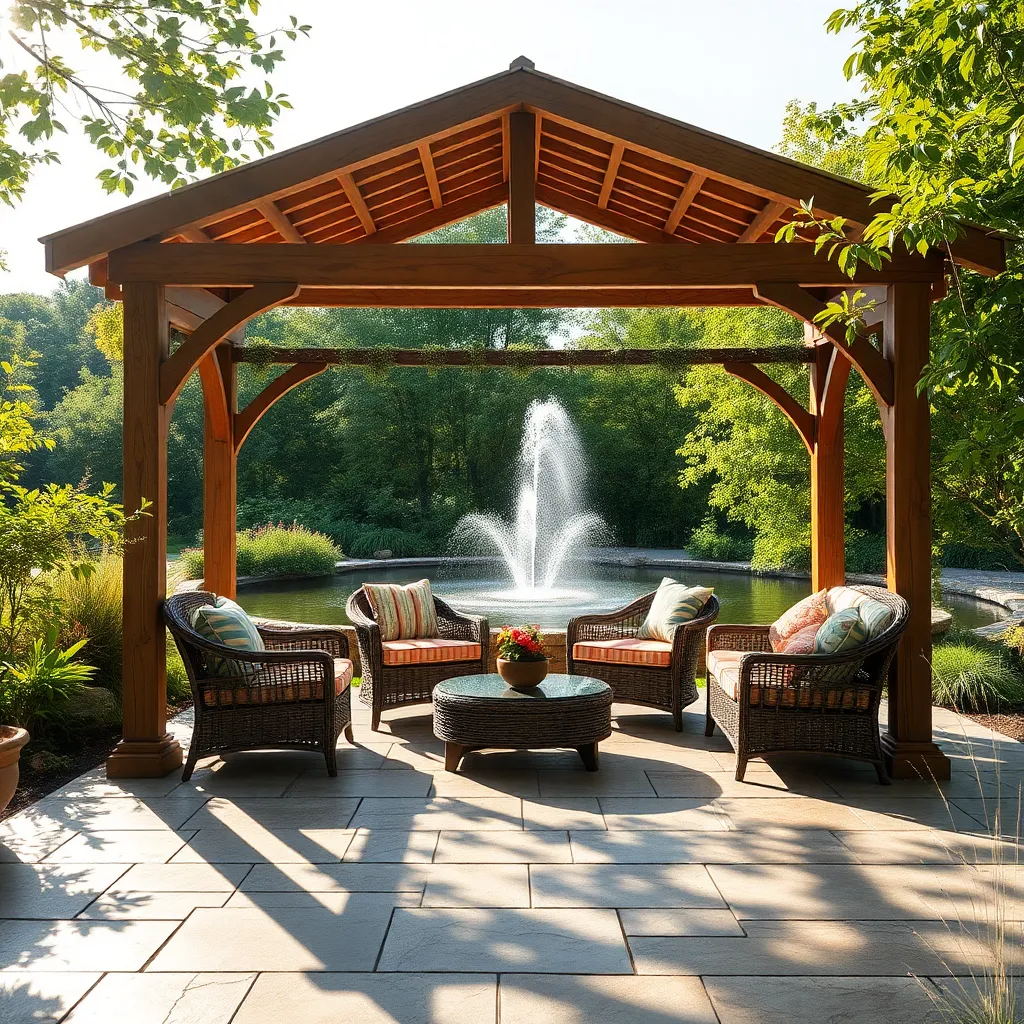
Adding a water feature near your gazebo can transform your outdoor space into a serene oasis. Consider installing a small fountain or a pond with a waterfall to create soothing sounds that complement the natural ambiance. Use weather-resistant materials like stone, concrete, or fiberglass to ensure longevity and minimal maintenance. For a simple yet effective setup, select a pre-formed pond liner and a submersible pump to keep water circulation smooth and algae-free.
For those seeking a more advanced touch, integrate a water feature with lighting to enhance the visual impact during evening gatherings. LED lights that can be submerged or placed strategically around the feature can create a magical glow. When designing, aim for balance by ensuring the water feature is proportionate to your gazebo and surrounding landscape. Positioning the water feature near seating areas will maximize the calming effect, making your gazebo a perfect retreat.
Conclusion: Creating Beautiful Outdoor Spaces
In exploring the 14 gazebo design ideas, we’ve delved into more than just architectural aesthetics; we’ve uncovered key relationship concepts such as communication, adaptability, shared goals, and personal space. Just as each gazebo design offers unique features, every relationship thrives on its distinct qualities. Whether it’s fostering open dialogue, finding balance, or creating a space for mutual growth, these concepts are the pillars of strong, enduring connections.
As a next step, take a moment to discuss with your partner which design resonates most with your relationship dynamics and why. This conversation can be a delightful way to strengthen your bond and ignite creativity in nurturing your relationship space.
Remember, great relationships, like well-designed gazebos, are built with intention and care. Bookmark this article as a handy guide to revisit these insightful concepts whenever you need inspiration or a gentle reminder of the foundational elements of your partnership.
Looking ahead, envision a future where your relationship continues to flourish, supported by the wisdom and creativity you’ve gathered. Embrace the journey, and take proactive steps today to design the love story you both cherish.
